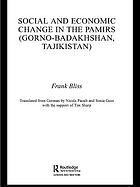
The Introduction to Economic Research Libguide (IERL) friendly guides you through all available internal library print and e-resources as well as external online open resources and websites related to economics. It provides links to economics related library print and eBooks, e-journals, databases and external online open text sources, articles, journals, databases, websites and makes life easier for accessing these specific resources and utilizing them for research. It is also very convenient and timesaving whenever students would like to quickly refer to related references or search and find information on this discipline.
The IERL consists of the following four main pages or tabs:

Welcome – this tab contains a brief introductory information as well as boxes of key and featured websites, e-journals, print and eBooks which can directly be accessed via the provided links. The books and e-journals are featured with the images of their cover pages and links which can also visually enable the students to remember the resources.
Library Resources - this tab consists of five more subtabs
Sources by Countries – provides direct links to related external sources for each respected South and Central Asian Countries
Open Sources – contains links to all kinds of related external open sources such as eBooks, e-journals, and websites
The library continues to update this guide with more important related internal and external resources.
 Social and Economic Change in the Pamirs (Gorno-Badakhshan, Tajikistan)
by
Since Olufsen and Schulz published their monographs on the Pamirs in 1904 and 1914, respectively, this is the first book to deal with the history, anthropology and recent social and economic development of the Pamiri people in Gorno-Badakhshan, Eastern Tajikistan. After the collapse of the Soviet Union, such high mountain areas were more or less forgotten and people would have suffered severely from their isolation if an Aga Khan Foundation project in 1993 to 1994 had not afforded broader support. The reader will be confronted by an almost surrealistic world: Pamiri income and living conditions after 1991 dropped to the level of a poor Sahelian country. Former scientists, university professors and engineers found themselves using ox-ploughs to plant potatoes and wheat for survival. On the other hand, 100% literacy and excellent skills proved to be an enormous human capital resource for economic recovery. The first sign of this was an increase in agricultural production, something that had never occurred during Soviet times.
Social and Economic Change in the Pamirs (Gorno-Badakhshan, Tajikistan)
by
Since Olufsen and Schulz published their monographs on the Pamirs in 1904 and 1914, respectively, this is the first book to deal with the history, anthropology and recent social and economic development of the Pamiri people in Gorno-Badakhshan, Eastern Tajikistan. After the collapse of the Soviet Union, such high mountain areas were more or less forgotten and people would have suffered severely from their isolation if an Aga Khan Foundation project in 1993 to 1994 had not afforded broader support. The reader will be confronted by an almost surrealistic world: Pamiri income and living conditions after 1991 dropped to the level of a poor Sahelian country. Former scientists, university professors and engineers found themselves using ox-ploughs to plant potatoes and wheat for survival. On the other hand, 100% literacy and excellent skills proved to be an enormous human capital resource for economic recovery. The first sign of this was an increase in agricultural production, something that had never occurred during Soviet times.